- News
- Reviews
- Bikes
- Components
- Bar tape & grips
- Bottom brackets
- Brake & gear cables
- Brake & STI levers
- Brake pads & spares
- Brakes
- Cassettes & freewheels
- Chains
- Chainsets & chainrings
- Derailleurs - front
- Derailleurs - rear
- Forks
- Gear levers & shifters
- Groupsets
- Handlebars & extensions
- Headsets
- Hubs
- Inner tubes
- Pedals
- Quick releases & skewers
- Saddles
- Seatposts
- Stems
- Wheels
- Tyres
- Tubeless valves
- Accessories
- Accessories - misc
- Computer mounts
- Bags
- Bar ends
- Bike bags & cases
- Bottle cages
- Bottles
- Cameras
- Car racks
- Child seats
- Computers
- Glasses
- GPS units
- Helmets
- Lights - front
- Lights - rear
- Lights - sets
- Locks
- Mirrors
- Mudguards
- Racks
- Pumps & CO2 inflators
- Puncture kits
- Reflectives
- Smart watches
- Stands and racks
- Trailers
- Clothing
- Health, fitness and nutrition
- Tools and workshop
- Miscellaneous
- Buyers Guides
- Features
- Forum
- Recommends
- Podcast
BUYER'S GUIDE
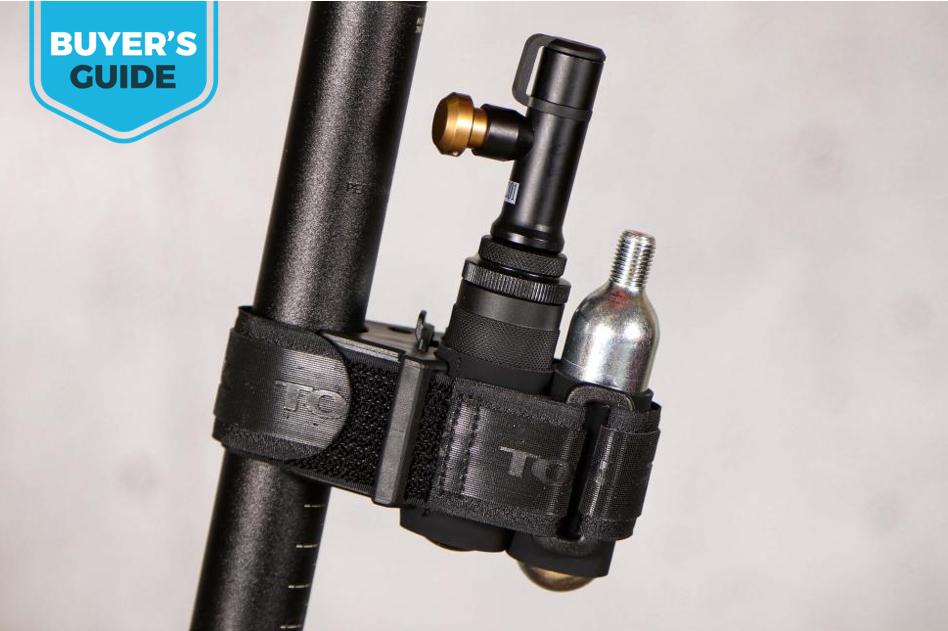 co2 inflators buyers guide
co2 inflators buyers guideBest CO2 inflators 2025 — pump your bike tyres up rapidly with this quick and portable alternative
A CO2 inflator will fill an inner tube in seconds, saving you time and effort and allowing you to get back in the saddle as quickly as possible. Here's what to look for when choosing from the best CO2 inflators.
- The best CO2 Inflators
- Vel CO2 Flow Regulator Head — £20.00
- Peaty's Holeshot CO2 Inflator — £26.99
- Pro Bike Tool CO2 Inflator — £17.99
- Lezyne Twin Kit CO2 — £23.86
- Topeak Tubi Master X — £37.20
- Cannondale CO2 Road Mini Pump — £31.99
- Lezyne Control Drive CO2 Inflator — £26.00
- Muc-Off CO2 Inflator Kit — £19.99
- Birzman Roar Control 16g — £19.19
- Genuine Innovations Ultraflate 20 — £20.00
- Bontrager Air Rush Road CO2 Pump — £30
- The cheapest CO2 cartridge refills we can find, the ICO CO2 cartridge threaded — £10.99/10
- Everything you need to know about CO2 inflators
CO2 inflators get your tyres up to pressure quickly, which is just the job when you're in a hurry to get moving again on a wet winter morning. A pressurised canister of carbon dioxide gas is pierced and the gas expands to fill your tyre.
Cartridges can cost over £3 each, which does makes CO2 a fairly pricey way to fix a flat. You'll want to save them for roadside emergencies, and invest in one of the best bike pumps you can afford for inflating your tyres before and after your rides.
While the best CO2 inflators are generally very reliable, it's still advisable to carry a manual frame pump or mini pump as well, especially for multi-day adventures. Failure to engage the canister properly - which could happen with freezing cold hands in winter when you're a bit too keen to get moving again - can happen. If you're only carrying one refill, that could be disastrous!
With some introductory advice and caveats out of the way, here are our top CO2 picks. For more advice, keep scrolling...
The best CO2 Inflators
Vel CO2 Flow Regulator Head — £20.00
Vel's fuss-free CO2 solution comes with two cartidges included, and is a decent inflator that offers a nice degree of control when blowing up your tyres.
As the name suggests, the Vel CO2 inflator allows you to regulate the inflation with a valve that you open and close, something that our reviewer found handy. To use it, simply make sure the inflator valve is closed, screw in the cartridge – with the sleeve on it – screw the head onto the tyre/tube valve, then open the valve on the head to inflate the tyre.
It's simple to use, well priced, and the sleeve protects your hands effectively.
Read our review of the Vel CO2 Flow Regulator Head
Peaty's Holeshot CO2 Inflator Kit — £26.99
This inflator from Peaty's comes in a range of cool Chris King-themed colours, but it's much more than just a pretty bit of kit.
Machined from 6061 aluminium, measuring just 45mm long and weighing a scant 14 grams, it's very robust and according to our reviewer, is much easier to use than most CO2 inflators. Rather than a right-angled inflator head, the Peaty's design means that you insert it into your (Presta) valve in a straight line. It's spring-loaded and you simply release to stop it, so it's very controllable if you only need a quick top-up. No screwing or twisting is required, as you just have to push it directly onto your valve stem. This could save valuable time in a scenario like a race where you've been unfortunate enough to puncture.
The Holeshot isn't cheap, but it should last years and it's very quick and easy to use.
Read the review of the Peaty's Holeshot CO2 Inflator Kit on off.road.cc
Pro Bike Tool CO2 Inflator — £17.99
The Pro Bike Tool CO2 Inflator is a neatly machined, fully controllable way to blast your tyres, just make sure that the snug valve union doesn't remove your valve core afterwards.
The knurled sections of the head give excellent grip, the foam sleeve fits tightly enough that you can screw the cartridge in with it on, and the easily replaceable o-rings don't leak. It fits both Presta and Schrader valves without modification.
The valve gives easy and progressive control over gas flow, which can help when seating awkward beads or if you find yourself without hand protection.
Read our review of the Pro Bike Tool CO2 Inflator
Lezyne Twin Kit C02 — £23.86
This compact CO2 kit from Lezyne fits easily in your jersey pocket or strap to your bike's seatpost, and each of its components works well. It consists of two CO2 canisters (16g or 25g, the latter adding about 100g weight), the Twin Speed inflator head, a patch kit and two tyre levers. These are all kept together by a Velcro strap, which also allows you to attach the kit to your bike's seatpost. The 16g canister is ideal for road tyres, with the 25g canister designed for larger volume gravel and mountain bike tyres.
The tyre levers are a bit small for stubborn tyres, but the CO2 kit itself works a treat and the patches are highly effective as an alternative to changing tubes.
Read our review of the Lezyne Twin Kit CO2
Topeak Tubi Master X — £37.20
Designed to plug a puncture and inflate it all in one compact package, the Topeak Tubi Master X is the priciest of the cycling accessory specialist's huge range of portable puncture repair tools, but could save you some time and doesn't take up much room.
While admitting that a neoprene sleeve or cover would be appreciated to protect your hands when deploying the CO2 cartidge (gloves are recommended) the operation is simple, plugging small punctures and getting air into your tyre quickly and efficiently.
It is expensive, but it's easy to use and the premium design and CNC machined aluminium head and tool carrier should mean the Tubi Master X will last you.
Read our review of the Topeak Tubi Master X
Cannondale CO2 Road Mini Pump — £31.99
If you can't decide between mini pump or CO2 or are just worried about running out of cartridges, Cannondale's CO2 Road Mini Pump is an impressive solution, and rather compact considering it's a two-in-one.
It fits Presta valves only, but if that's you then it's simple to operate. Attach it to your valve using the hand pump side and you can inflate the tyre under your own steam, or flip it over, attach it to the valve again using the CO2 side, screw in a CO2 cartridge to the top-mounted port, and inflate your tyre in seconds.
While our reviewer found the hand pump wasn't the most powerful, it's likely you'll be using the CO2 to fill up properly after a puncture and the hand pump just for top-ups, so overall it's a convenient tool that is easy to use.
Read our review of the Cannondale CO2 Road Mini Pump
Lezyne Control Drive CO2 Inflator — £26.00
Lezyne's Control Drive provides easy control of the flow of gas, which makes it really easy to get any Presta or Schrader inner tube fully inflated.
The Control Drive is a simple, compact design that works effectively. You simply push it on to the valve, and turn the inflator head to release air. The knurled ring provides good grip and there's a little graphic on the end of the head that tells you which way you need to turn it. You can open it a little for a small release of gas, or open it fully to get the full beans.
A neoprene sleeve fits over the CO2 cartridge to protect your hands during use.
Read our review of the Lezyne Control Drive CO2 Inflator
Muc-Off CO2 Inflator Kit — £19.99
The Muc-Off Inflator Kit allows you to inflate your tyres quickly and get back to riding in no time. The chuck works really well, inspiring confidence that it won't release CO2 while attaching, there's a button that lets you control the release of gas, and a neoprene sleeve to stop you freeze-burning your fingers
In the kit you get two 16g road cartridges (there's a mountain bike version of the kit with 25g cartridges), one CNC-machined inflator head, and the neoprene sleeve.
The head is a tidy piece of kit that's CNC-machined from aluminium alloy. It is threaded and can be screwed onto either a Presta or Schrader valve, which is much more confidence-inspiring than push-fit alternatives.
Read our review of the Muc-Off CO2 Inflator Kit
Birzman Roar Control 16g — £19.19
Birzman's Roar Control is similar to many others on the market but it does offer one neat touch over some of the cheaper models: you can control the flow by twisting the CO2 cartridge.
Once you've screwed the threaded cartridge on to the head to puncture the seal, you just unscrew it slowly and the gas is able to flow. The flow rate depends on how far you unscrew it, so you can just let the CO2 trickle out until you're sure everything is seated right, then blast the tyre up to pressure.
Birzman provides a neoprene sleeve to slide over the cartridge to prevent freeze burns.
The head is CNC-machined from aluminium alloy, and it's threaded to enable it to be screwed onto either a Presta or Schrader valve.
Read our review of the Birzman Roar Control 16g
Genuine Innovations Ultraflate 20 — £20.00
The Genuine Innovations Ultraflate CO2 inflator is a super-useful bit of kit, although it is larger and heavier (155g) than many rivals.
The unit, made of tough glass nylon and featuring brass parts that won't rust, comes in two parts: a cartridge holder and a head unit – which features a trigger and lock switch to control and secure the flow.
This inflator takes non-threaded 20g cartridges as well as threaded 16g and 20g cartridges. They all work equally well so it doesn't matter which you pick up as spares. It works with both Schrader and Presta valves.
The trigger means you can ease the delivery, and the holder keeps your hands safe from freeze burns.
Once done, if there is any gas left you can lock the trigger and use it next time.
Read our review of the Genuine Innovations Ultraflate CO2 Inflator
Bontrager Air Rush Road CO2 Pump — £30
The Bontrager Air Rush Road CO2 Pump is a nifty little dual design that won't leave you deflated on the roadside.
The pump on its own is a very capable little design. It is small so it can only shift so much air, but the upside is that it's easy to carry in a jersey pocket, independent of the CO2 canisters and mounting bracket.
The pump also acts as the regulator for the CO2 cartridge. The head has two sides, with one being a threaded aluminium adaptor for the cartridge. The adaptor is well made and the cartridges thread easily.
The inclusion of a cartridge insulator is really useful for protecting your hands from the super-cold canisters. It's a simple rubber sleeve but it's a nice touch.
Read our review of the Bontrager Air Rush Road CO2 Pump
ICO 16g threaded cartridges — £10.99/10
As far as we can tell, these are the cheapest 16g cartridges that you can buy without having to dedicate a store room to bulk stock.
Everything you need to know about CO2 inflators
Parts of a CO2 inflator
There are two main parts of a CO2 inflator: the head and the replaceable CO2 cartridge (sometimes called a canister).
The head attaches to the valve stem and is the means by which the carbon dioxide is transferred from the cartridge to your inner tube.
The C02 cartridge is a steel tank of pressurised gas that's easily small enough to stash in a saddle pack. The pressure means that once it's attached to the valve the C02 inflator will fill your inner tube/tyre in a fraction of the time it would take with a mini pump or even a floor pump.
Threaded vs non-threaded cartridges
Most CO2 inflators that we've reviewed lately take threaded cartridges – the neck of the cartridge screws into place on the head, the seal at the top getting pierced in the process.
Other C02 inflators take non-threaded cartridges that push into place on the head.
Threaded cartridges usually cost just a little more than non-threaded cartridges.
Some inflators, such as the Genuine Innovations Ultraflate, work with both threaded and non-threaded cartridges, but most are compatible with one or the other.
Inflators for threaded cartridges can be minimalist, head-only designs that weigh very little and take up just hardly any room. If you really want to save space, this is the better option for you.
Inflators for non-threaded cartridges need some form of body to hold the cartridge in place, so they tend to be larger and weigh a little more – although the hollow shell that the cartridge sits in is never particularly heavy. The body also protects your hands from the freezing cold cartridge in operation (see below).
C02 cartridge size
C02 cartridges come in various sizes starting at 12g. A 16g cartridge will fill most road bike tyres but you'll need a larger cartridge for some mountain bike tyres, depending on the volume and the pressure you like to run.
If you want to be safe, you can carry a couple of cartridges. If you want to be really safe, you can carry a mini pump or a combined CO2 inflator and mini pump like Bontrager's Air Rush Road Mini Pump (£24).
Controlling the flow
With some basic CO2 inflators, the gas flows through the head as soon as the top of the CO2 cartridge is pierced. This means you need to have the head already in place on the valve or you'll waste the gas.
Most CO2 inflators have some means of stopping/controlling the flow: you either push the head on to the valve to inflate, twist a wheel, or use some form of trigger.
As well as being easier to operate, these inflators have the advantage of allowing you to use half a cartridge of CO2 to top up a tyre, and saving the rest for another time.
Here's how to use a CO2 inflator
Ease of use
Some CO2 inflators are easier to use than others. They're all pretty small and some are downright fiddly, especially if your fingers are cold and wet after replacing an inner tube on a winter ride, so choose something that's simple to operate.
It's definitely worth trying out a new CO2 inflator at home to get familiar with the way it works rather than waiting until you puncture out on the road. You'll have to sacrifice a CO2 cartridge but that's better than finding yourself stuck in the middle of nowhere because you accidentally lost a load of gas.
The cartridge gets c-c-c-cold
A CO2 cartridge gets cold when you let the gas out – really cold! If you simply held a bare cartridge in your hand while inflating your tyre it would be extremely uncomfortable, your skin could stick to the metal and you might do yourself some damage.
Some inflators hold the cartridge within a plastic body so this isn't an issue. With others, though, you'll need to protect your hands in another way. Full finger gloves will prevent freeze burns, but you're unlikely to be wearing them in the summer so carry something like a neoprene cartridge sleeve.
Flying with CO2 cartridges
The UK Civil Aviation Authority (CAA) says that you can carry "no more than four small cylinders of carbon dioxide or other suitable non-flammable non-toxic gas per person and the water capacity of each cylinder must not exceed 50ml".
For CO2, a gas cylinder with a water capacity of 50ml is equivalent to a 28g cartridge.
However, Gatwick Airport's security advice says, "There are some items that you’re not allowed to take on your aircraft in either your hand baggage or your hold luggage [including] any gas cylinders."
The US Transportation Security Administration (TSA) says, "Except for personal medical oxygen cylinders, you can only carry an EMPTY compressed gas cylinder onboard a plane."
We've, erm, accidentally left cartridges in a saddle pack on a bagged-up bike and gotten away with it, but if you take CO2 cartridges on a flight, be prepared to lose them. Our advice is to have a back-up pump if you're flying. Check out the comments for a couple of reader experiences on this.
Use with tubeless tyres
A CO2 inflator will provide the blast you need to seat a tubeless tyre on a rim but it'll have a detrimental effect on some sealants. Check what your sealant manufacturer has to say before going down this route.
Pros of CO2 inflators
• Quick and easy to use
• Inexpensive
• Small and lightweight
Cons of CO2 inflators
• You could find yourself stranded if the gas runs out
• You're tied in to buying replacement cartridges
• Cartridges are single use and difficult to recycle at home or at the roadside, so arguably it's less environmentally-friendly than using a pump
Explore the complete archive of reviews of pumps and CO2 inflators on road.cc
About road.cc Buyer's Guides
The aim of road.cc buyer's guides is to give you the most, authoritative, objective and up-to-date buying advice. We continuously update and republish our guides, checking prices, availability and looking for the best deals.
Our guides include links to websites where you can buy the featured products. Like most sites we make a small amount of money if you buy something after clicking on one of those links. We want you to be happy with what you buy, so we only include a product if we think it's one of the best of its kind.
As far as possible that means recommending equipment that we have actually reviewed, but we also include products that are popular, highly-regarded benchmarks in their categories.
Here's some more information on how road.cc makes money.
You can also find further guides on our sister sites off.road.cc and ebiketips.
road.cc buyer's guides are maintained by the road.cc tech team. Email us with comments, corrections or queries.
Mat has been in cycling media since 1996, on titles including BikeRadar, Total Bike, Total Mountain Bike, What Mountain Bike and Mountain Biking UK, and he has been editor of 220 Triathlon and Cycling Plus. Mat has been road.cc technical editor for over a decade, testing bikes, fettling the latest kit, and trying out the most up-to-the-minute clothing. He has won his category in Ironman UK 70.3 and finished on the podium in both marathons he has run. Mat is a Cambridge graduate who did a post-grad in magazine journalism, and he is a winner of the Cycling Media Award for Specialist Online Writer. Now over 50, he's riding road and gravel bikes most days for fun and fitness rather than training for competitions.
Latest Comments
- brooksby 13 min 34 sec ago
I'm not entirely sure that the Orange One understands that concept. Pretty sure that he thinks that "the truth" is whatever he says it is, at any...
- mdavidford 15 min 8 sec ago
His demo unit looks pretty scuffed up, which makes me wonder if it's flapping out and contacting the foot as it passes, which would seem to be......
- GMBasix 15 min 34 sec ago
It hasn't been narrowed.
- BikingBud 21 min 11 sec ago
I had not seen that before but reading it I was shouting that they have handed all the evidence to the prosecution to support the charge. Only to...
- Jem PT 31 min 19 sec ago
And possibly reclaim the VAT on the way back to the UK? At last - a Brexit benefit!
- Surreyrider 1 hour 22 min ago
All good then - go for it. Although maybe the reviewer should be including information like that as it's pretty basic stuff.
- The_Ewan 2 hours 2 min ago
People don't 'need' the big expensive cars either, but people like nice things....
- slc 2 hours 43 min ago
An excellent plan. In fact the Church Road site has parking spaces for rent from time to time, which are snapped up, though not quite as quickly as...
- Tom_77 3 hours 4 min ago
Eventually managed to get my hands on these, ordered from Cycling 2000 (looks like a few other UK shops also have them)....
- Tom_77 3 hours 14 min ago
My brother bought me this mug - no occasion, just "saw this and thought of you".
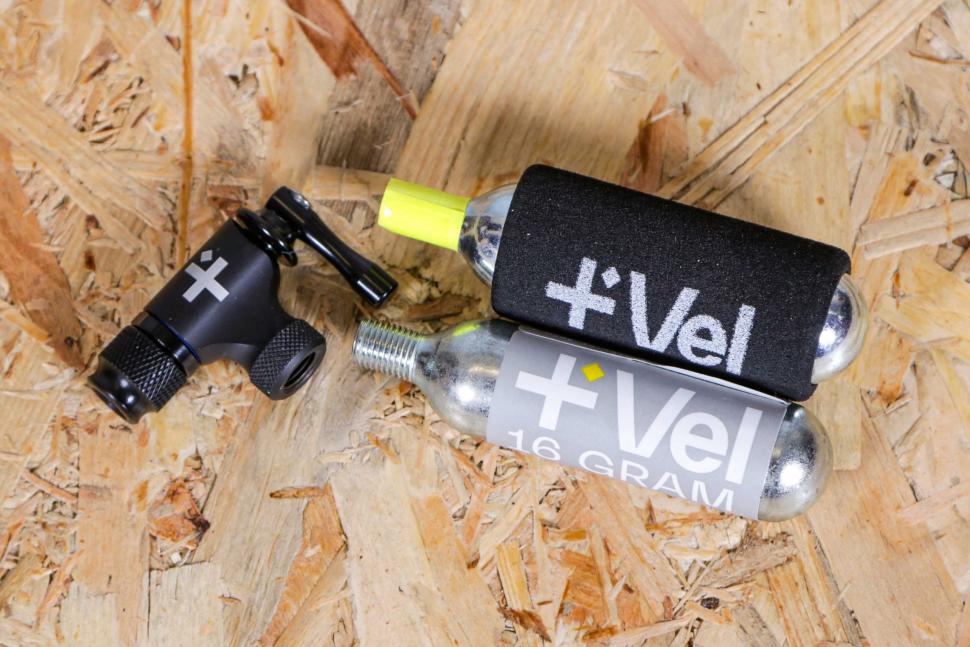

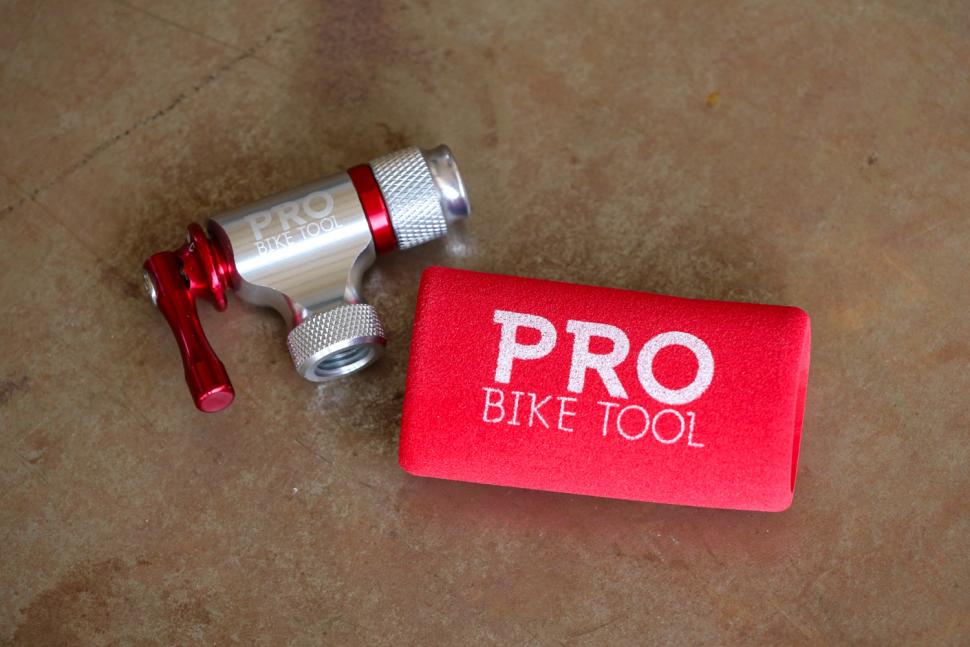
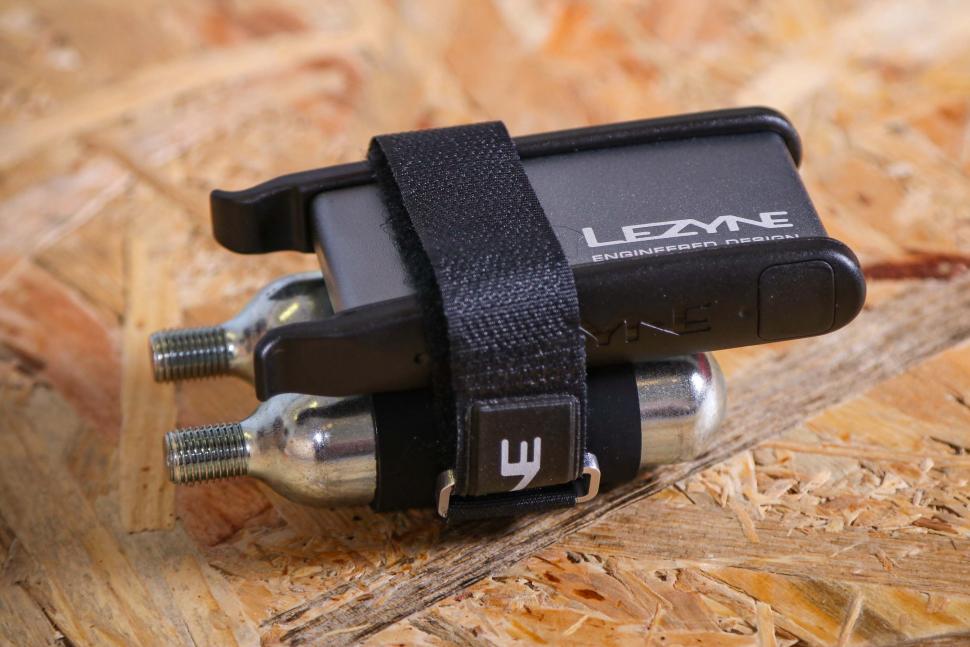


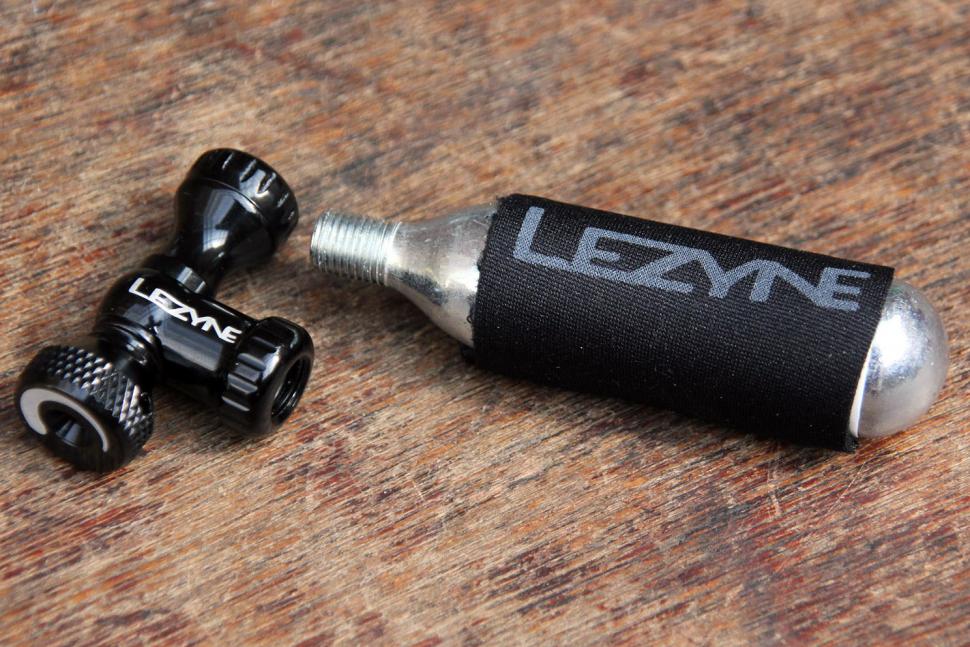
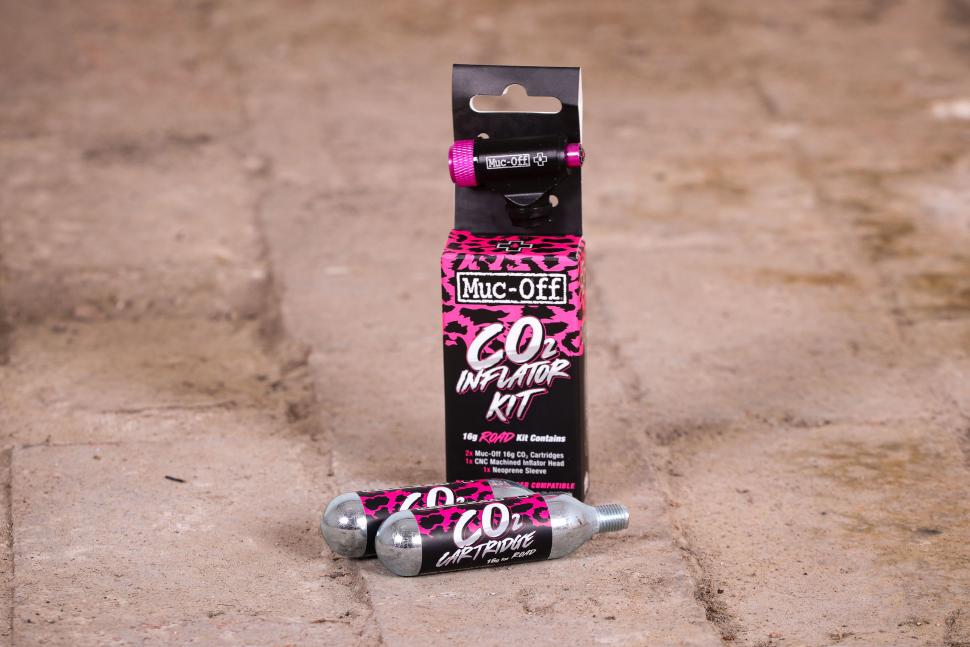
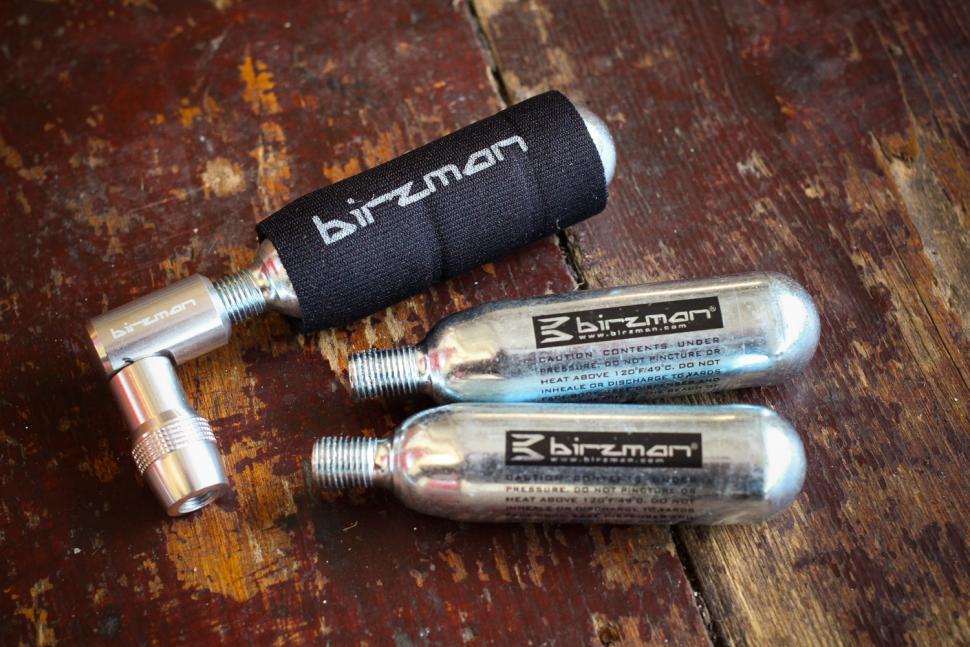
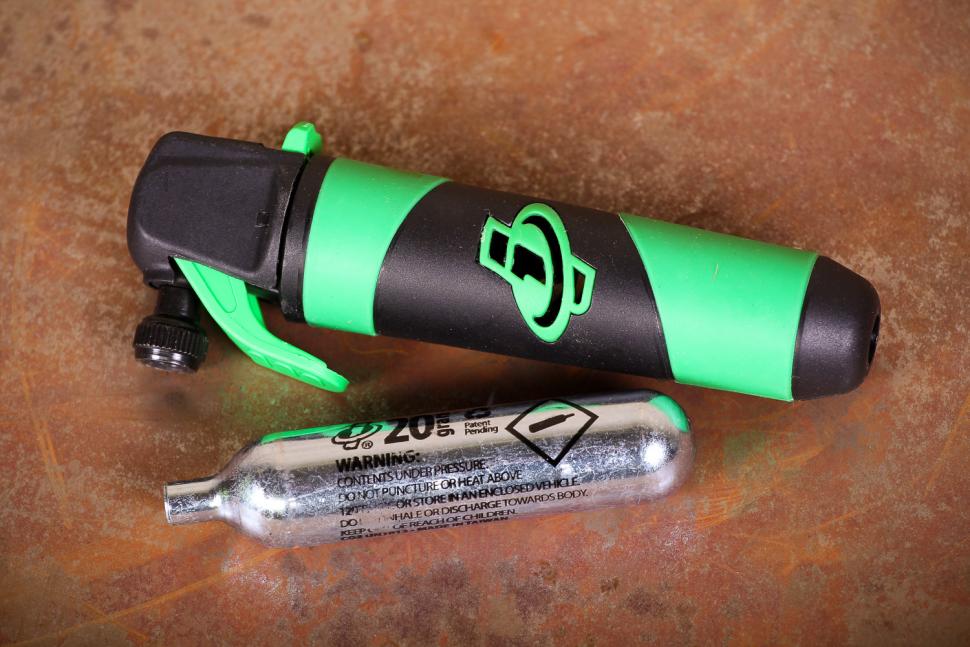
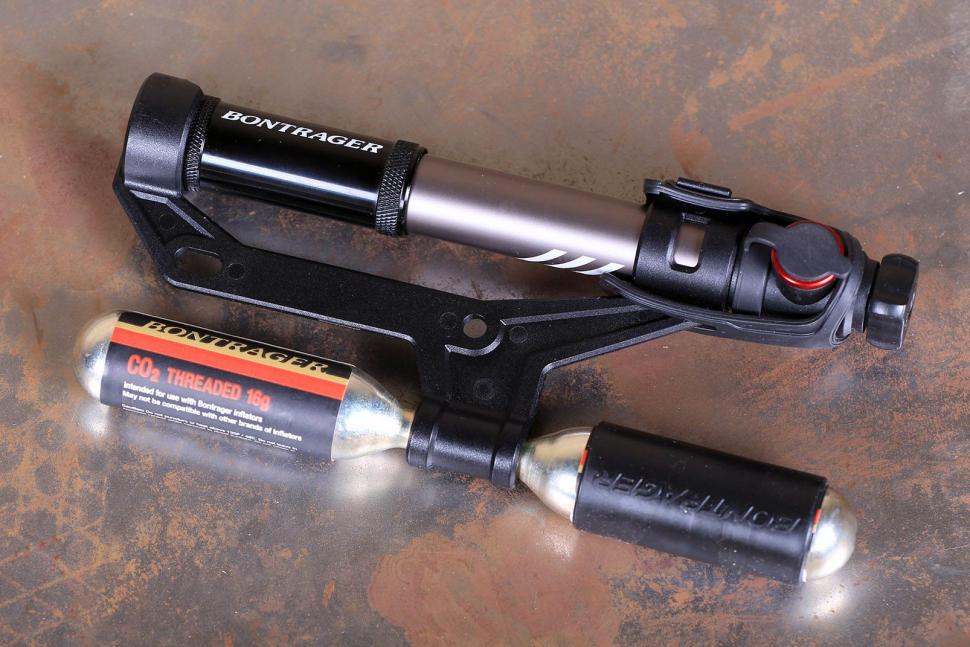
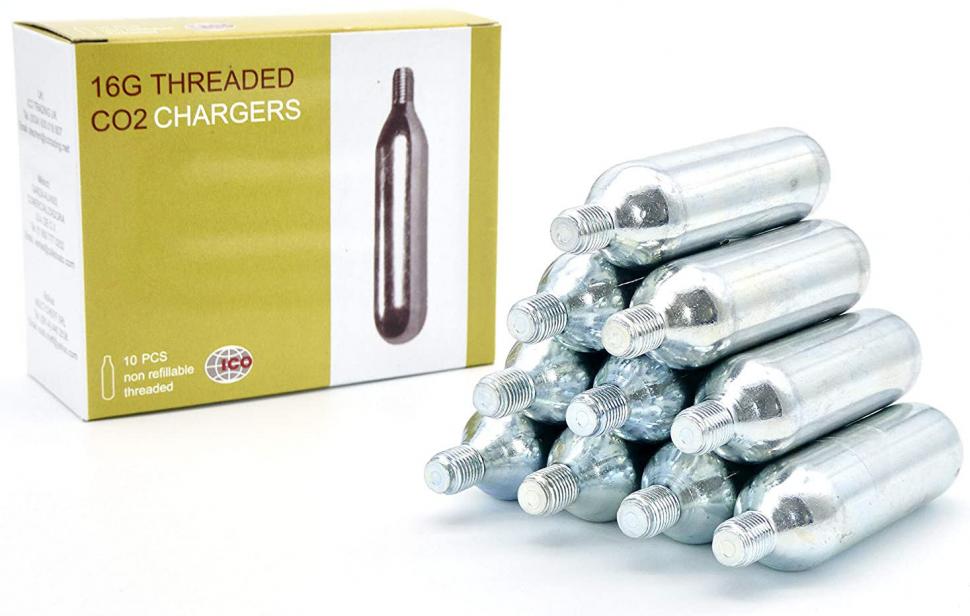

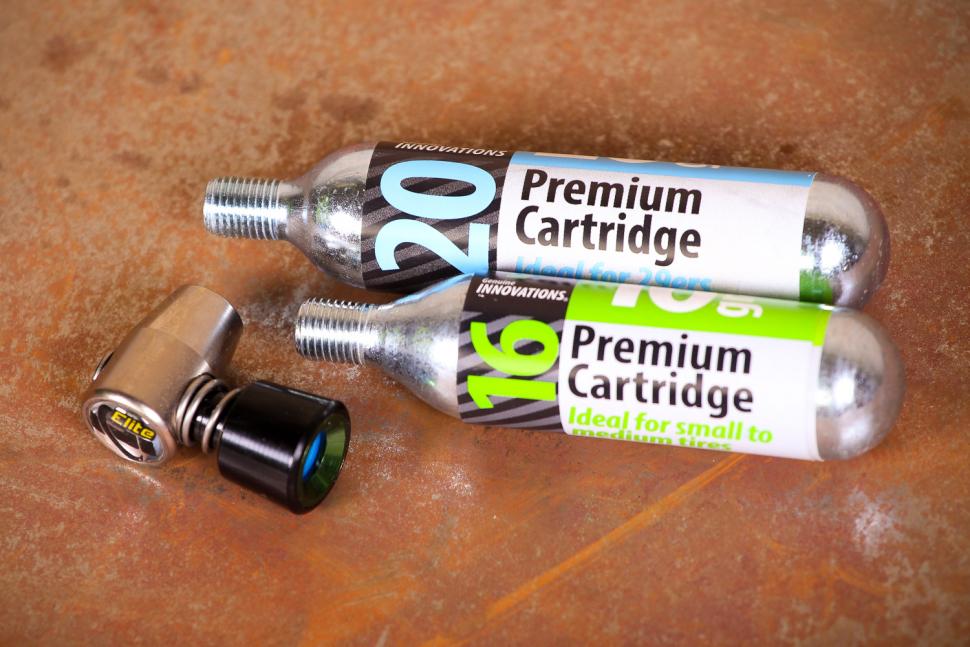
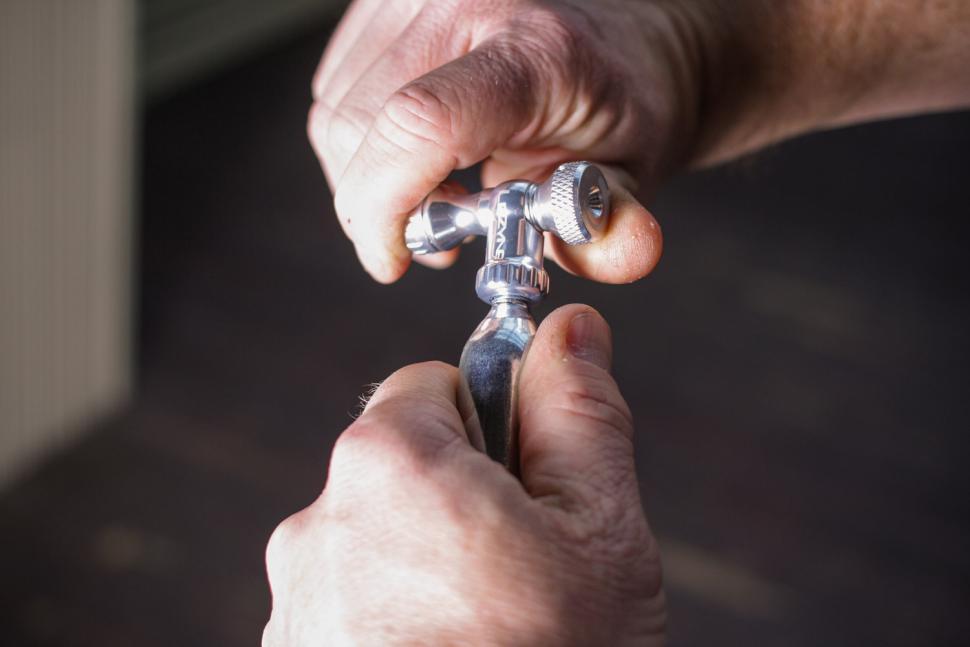

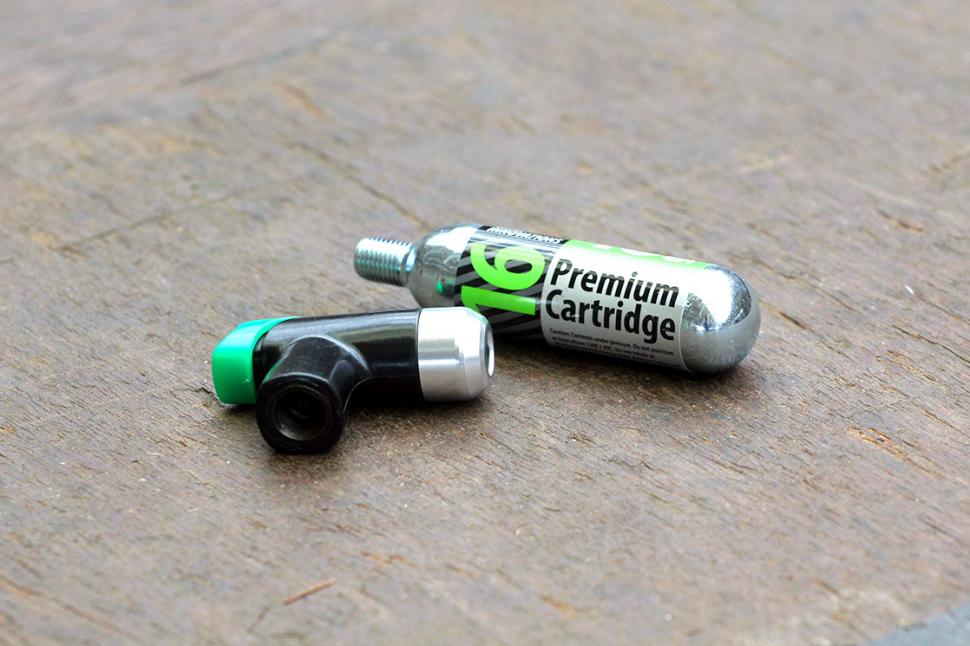

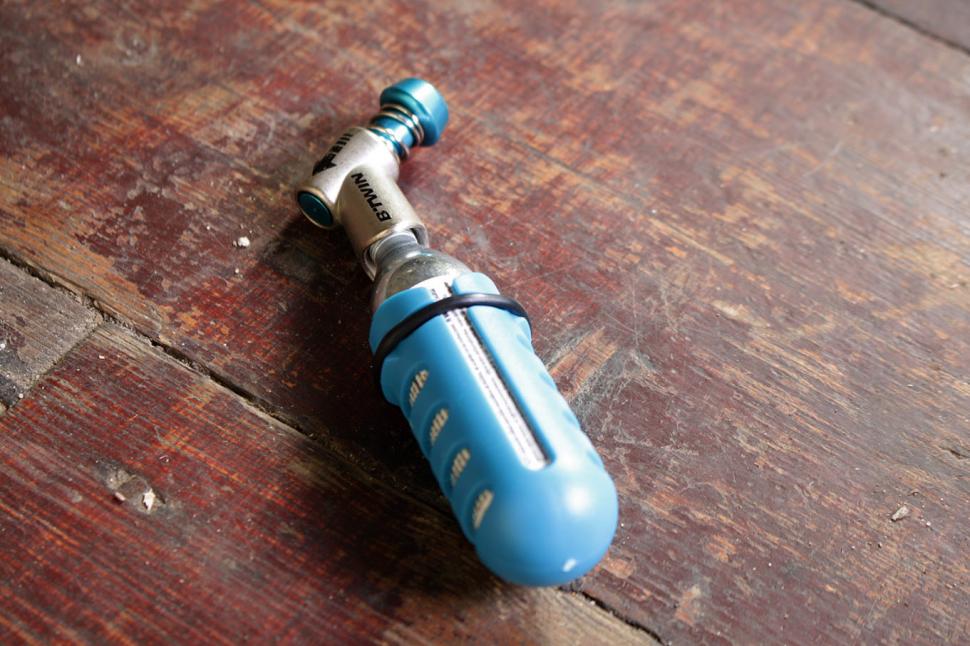
Add new comment
9 comments
I've been let down by the Mucoff one a few times and today was the last straw. The bit you unscrew on the stem regularly goes deep into it and needs a hard pull to get it out and today it wouldn't come out.
Top Tip/s:
Don't want your fingers to freeze-stick to the cannister when using? Just re-use an old inner tube that is beyond repair/normal use. You just cut a few inches off and then ease it over a cannister before placing in your back pocket. One old inner tube will last a lifetime for this...and don't forget that an old tyre makes an excellent tyre boot, just cut off about 3-4 inches and then cut off the beads. Perfect for getting home with a split tyre or bad puncture.
Missing from the cons list, is that you must deflate the tyre and reinflate with air when you get home, or it will be flat by the next time you ride. Might also be an issue on a multi day tour, but not likely to be an issue on a club ride.
CO2 has a way of passing through the rubber of inner tubes and tyres that oxygen and nitrogen do not.
Blackburn make an excellent pump / CO2 hybrid. Compared to rival products, it's much easier to use in pump mode due to the inflator head being at the end of a hose. I have two of them (one permanently in commuter backpack). Being able to put a couple of pumps of air into a new tube to give it some shape before installing is very handy:
https://www.blackburndesign.com/p/core-co2fer-bike-mini-pump/350180000200000045.html
I've heard of stories where passengers flying had their bags pulled and the CO2 cartridges removed plus a stern talking to! Having flown out of Lanzarote three times now with my bike checkin is very explicit and they ask if you have any CO2 cartridges.
Interestingly, this doesn't seam to be driven by the airlines, more so by the airports. In anycase I travel with the inflator head and just buy CO2 locally. If I don't need them I just donate to the bike shop or a fellow cyclist I see when leaving.
Are the Vel and the Pro Bike Tool inflators identical other than colour/branding? They certainly look it to me.
Also suprised the Peaty's Holeshot inflator didn't make the list. It's the one I have so I may be a bit biased, but it works admirably and is very small and light. More importantly, when reviewed on off.road.cc it scored 4.5*, which is higher than pretty much everything that did make it onto this list!
Sorry, it was hanging around in the 'tools' section on off.road.cc rather than the pumps and inflators bit so we missed it. It's been added, thanks for the reminder!
I may have had a duff one, but the Lezyne control is absolute garbage.
The first time I needed it it wouldn't screw in far enough to properly pierce the cartridge, so took forever to half inflate the tyre. After dismantling and reassembling, the second time the rubber ring seal blew out and the gas went everywhere except where it was needed.
Bought the Pro Bike co2 adapter and had no probems since.
Think you may just have been unlucky (or me lucky). I have the same one and so far it worked fine. Won't wax lyrical about it, - it's an inflator, not a nuclear reactor- but mine is ok.
Still, it's sour to purchase something and have it come apart on first use.